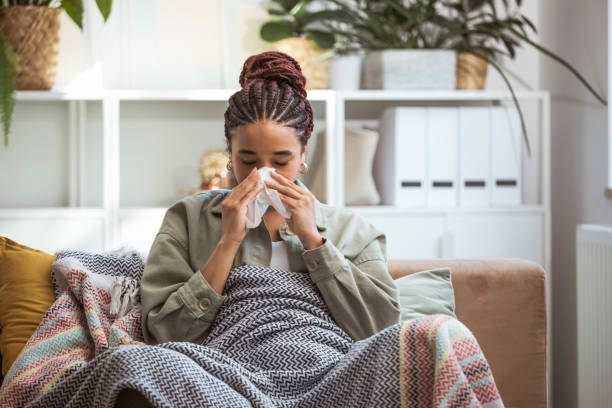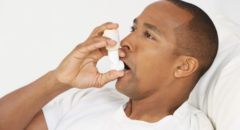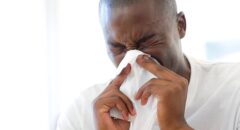
A common infectious disease, pneumonia takes root when the air sacs within your lungs become filled with pus or fluid. Understanding the ins and outs of pneumonia is essential. This article will explain the various types of pneumonia, along with its underlying causes, symptoms and the array of treatments available.
What is pneumonia?
Pneumonia is an infection that triggers inflammation in the air sacs of the lungs. The Mayo Clinic suggests it manifests as the air sacs become inundated with fluid or pus, which can give rise to distressing symptoms. Among these are a persistent cough accompanied by phlegm or pus, fever with chills, and difficulties in breathing. Diverse organisms, including bacteria, viruses and fungi, often cause pneumonia.
Pneumonia can be mild or very serious, even life-threatening. It’s most dangerous for certain groups of people. Babies, kids, older adults (65 and up), and people who are already sick or have weak immune systems are more likely to have serious problems if they get pneumonia. There are different types of pneumonia, too, including walking pneumonia.
Walking pneumonia, specifically, is caused by mycoplasma pneumoniae bacteria.
“It usually causes cold-like symptoms in addition to a fever [often low-grade] and a hacking cough. It is most common in school-aged children and young adults,” Yale pediatrician Dr. Annette Cameron, said in a recent Yale Medicine article.
Walking pneumonia symptoms might not be recognized right away. This is especially true if a child can carry on with regular activities and doesn’t seem as visibly unwell as they would with different types of pneumonia.
“And that’s why it’s called walking pneumonia,” Cameron explained. “It might just be a little bit of malaise. Sometimes you can have community-acquired or bacterial pneumonia, along with walking pneumonia, in which case we would treat both.”
Types of pneumonia
Johns Hopkins Medicine indicates that there are over 30 different causes that can lead to pneumonia, grouped by their origin. The primary pneumonia types are:
Bacterial pneumonia
This results from various bacteria, with Streptococcus pneumoniae being the most common. It typically targets weakened bodies due to illness, poor nutrition, age or impaired immunity. It affects all ages, but is more concerning for people who misuse alcohol or smoke, and those who have recently had surgery or suffer from respiratory diseases, viral infections or weakened immunity.
Viral pneumonia
Triggered by various viruses, including influenza, this accounts for one-third of all pneumonia cases. Viral pneumonia may raise the risk of bacterial pneumonia.
Mycoplasma pneumonia
Known as atypical pneumonia, this type is caused by Mycoplasma pneumoniae bacteria. It leads to distinct symptoms and signs, generally resulting in mild, widespread pneumonia for all age groups.
Other pneumonias
Some other, less common, types of pneumonia, stem from different infections, including fungi.
Bronchitis vs. pneumonia: What’s the difference?
It’s natural to wonder about the differences between bronchitis and pneumonia. Bronchitis arises when the air tubes in your lungs, known as bronchioles, become inflamed, often following a viral infection like a cold or the flu. This inflammation causes the tubes to fill with thick mucus, resulting in persistent coughing and the expulsion of yellow-green mucus, according to the Cleveland Clinic.
Additional bronchitis symptoms include wheezing while breathing, body aches, chest soreness from coughing, fatigue and a mild fever.
In contrast, pneumonia targets the tiny sacs (alveoli) within your lungs. These sacs become inflamed, impairing oxygen and carbon dioxide exchange between the lungs and the bloodstream. Pneumonia can stem from various bacteria, viruses or fungi, and its symptoms include mucus-filled cough, high fever, rapid breathing, fatigue, sweating, chills and muscle pain. Complications may involve lung fluid buildup, bacteria entering the bloodstream, or the formation of lung abscesses — pus-filled cavities in the lungs.
What causes pneumonia?
Pneumonia can stem from various sources. The National Heart, Lung, and Blood Institute lists the following primary causes:
- Bacteria: Bacterial pneumonia can be triggered by several types of bacteria, such as Streptococcus pneumoniae, Legionella pneumophila, and Mycoplasma pneumoniae.
- Viruses: Viral pneumonia is commonly caused by influenza (flu), respiratory syncytial virus (RSV) and adenovirus. COVID-19 can also lead to viral pneumonia.
- Fungi: Fungal pneumonia can result from exposure to fungi like Pneumocystis jirovecii, Histoplasma capsulatum, and Cryptococcus neoformans.
Pneumonia symptoms
Pneumonia’s effects can span from barely noticeable symptoms to severe cases requiring hospitalization. The American Lung Association says that your body’s reaction to pneumonia hinges on factors such as the specific type of germ causing the infection, age and overall health.
Common signs of pneumonia include:
- Coughing, possibly yielding greenish, yellow or even bloody mucus
- Fever accompanied by sweating and chills
- Breathing difficulties leading to rapid, shallow respiration
- Discomfort or piercing chest pain, exacerbated by deep breaths or coughing
- Diminished appetite, energy levels and lingering fatigue
- Nausea and vomiting, particularly prevalent among young children
- Confusion, most often in the elderly population
Walking pneumonia symptoms
Walking pneumonia might resemble a severe cold or the flu. Common symptoms of walking pneumonia, as provided by the Cleveland Clinic, include:
- Throat soreness
- Profound weariness
- Mild chest discomfort or pain
- A slight fever (below 101 degrees Fahrenheit)
- Gentle chills
- Coughing
- Sneezing
- Headache
Is pneumonia contagious?
According to the American Lung Association, specific pneumonia types are contagious, transferring from person to person through actions like coughing, sneezing, talking, by releasing respiratory droplets into the air. Additionally, touching surfaces covered by the germ and then touching your nose or mouth can lead to transmission, though not everyone exposed will develop pneumonia.
Contagiousness duration varies based on pneumonia type and cause. In bacterial pneumonia, it lasts around 48 hours post-antibiotic initiation and fever cessation. Viral pneumonia’s contagious period subsides as symptoms improve, especially fever.
Fungal-induced pneumonia isn’t contagious. Some individuals may be more susceptible than others.
What does pneumonia feel like?
Pneumonia symptoms can range from mild discomfort to severe illness. Common signs include persistent cough, often producing mucus, fever, chills and difficulty breathing. Chest pain, fatigue and reduced appetite are also typical.
In some cases, symptoms can be mild, resembling a bad cold or the flu, while in others, they can be more pronounced, potentially leading to hospitalization.
Pneumonia treatment
The National Heart, Lung, and Blood Institute states that treating pneumonia hinges on risk factors and its severity. Many recover at home with prescription medications, while severe cases might require hospitalization or ICU care. Here’s what you need to know about pneumonia treatment:
Pneumonia medication
Individuals with community-acquired pneumonia often receive home treatment with medications. While most symptoms subside within a few days or weeks, lingering fatigue might endure for months or longer.
- Antibiotics: Identifying the specific bacteria and selecting the suitable antibiotic takes time for bacterial pneumonia. If symptoms persist, changing antibiotics might be advised.
- Cough medicine: While coughing aids in fluid removal from the lungs, some relief with a cough suppressant may be sought.
- Fever reducers/pain relievers: As needed, drugs like aspirin, ibuprofen or acetaminophen can manage fever and discomfort.
Pneumonia self-care
Mount Sinai recommends a range of self-care measures to aid in pneumonia recovery. These practices can alleviate discomfort and enhance your healing journey.
- Breathing warm, moist air: Loosen sticky mucus by inhaling warm, moist air. Try warm washcloths or humidifiers.
- Coughing and chest tapping: Regular deep breaths and gentle chest tapping help clear airways and dislodge mucus.
- Smoking cessation: Quit smoking and prevent indoor smoking.
- Hydration and rest: Drink liquids, avoid alcohol, and rest, including daytime naps if sleep is challenging.
Is there a pneumonia vaccine?
To safeguard against Streptococcus pneumoniae bacterial infections, vaccines are an effective preventive measure. In the United States, the U.S. Centers for Disease Control and Prevention indicate that two types of pneumococcal vaccines are available:
- Pneumococcal conjugate vaccines
- Pneumococcal polysaccharide vaccine
Living with pneumonia
Pneumonia, though challenging, is a temporary phase, and your body has remarkable healing abilities. The National Heart, Lung, and Blood Institute offers these tips for a smooth pneumonia recovery:
- Opt for nourishing foods to support your body’s recuperation
- Drinking ample fluids is crucial to maintaining hydration levels
- Reinforce your immune system by abstaining from alcohol and illicit substances
- Refrain from smoking and secondhand smoke exposure, as they exacerbate pneumonia symptoms
- Quality rest enhances immune responses, aiding recovery
- Gentle movement aids strength recovery, but consult your healthcare provider for appropriate levels of exertion
- Sitting upright promotes comfort and smoother breathing
- Taking a few deep breaths periodically fosters lung health and aids recovery









